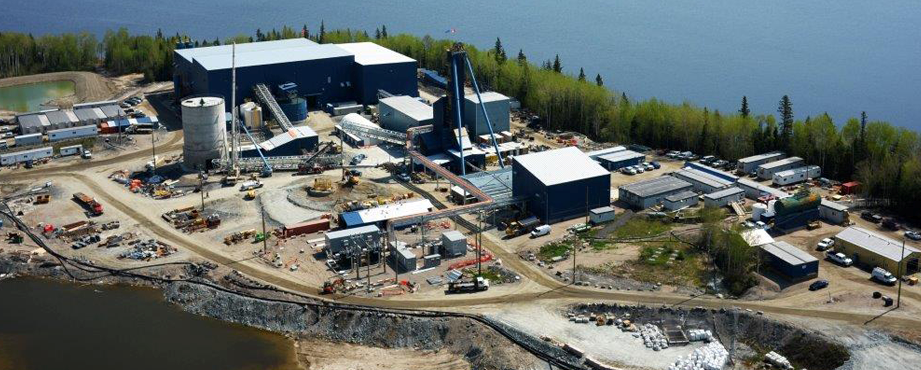A Red Lake mine builder is pondering a name change.
Shareholders of Rubicon Minerals will be asked to consider a new name for the company letterhead - Battle North Gold Corporation - at the June 22 annual general meeting.
The name of the proposed mine could also change from the Phoenix Gold Project to the Bateman Gold Project, the township where the development is located.
In a May 19 release, Rubicon said the name change provides a "fresh perspective" on the accomplishments made in over last three and a half years.
"With our project continuing to advance in a positive direction, we believe now is the appropriate time to change the name of the company and the project," said president-CEO George Ogilvie in a statement, something that embodies "our culture of perseverance, determination, and resilience."
The possible name change would come in advance of the release of a feasibility study that will springboard the company toward resuming production, halted in 2015.
Rubicon's Phoenix Gold Mine Project holds the distinction of being one of Northern Ontario's biggest mining blunders.
Want to read more stories about business in the North? Subscribe to our newsletter.
In the summer of 2015, the mine project was fast-tracked into production without doing the proper technical work to fully understand, what became, a 'geologically challenging' environment.
A revised resource calculation released by Rubicon in January 2016 revealed the gold estimates had shockingly dropped from 3.3 million ounces to just 413,000 ounces.
With the surface buildings, including the headframe and hoist, already standing, the company was forced to halt all underground development work during a trial stoping period of its F2 Gold Deposit. More than 300 miners and contractors were let go.
The management team was sacked and the company went into creditor protection.
Former Kirkland Lake Gold CEO George Oglivie was brought in to restore investor confidence and conduct a more methodical step-by-step approach to gold exploration.
Today, the Phoenix Gold Project contains a measured and indicated gold resource estimate of 811,000 ounces of gold, grading 6.45 grams per tonne (g/t); and an inferred resource of 464,000 ounces at 6.97 g/t.
A preliminary economic assessment projects a mining life of 6.2 years. A more detailed feasibility study on the project's economics is due out sometime in the second half of this year.
Upgrades to the mine's infrastructure have largely been completed and quotes are being gathered for underground mobile equipment.
About 14 kilometres of underground development has been done and the shaft has been extended down to 730 metres.
In the meantime, efforts continue to add more ounces.
Since October, Rubicon has been conducting deep underground infill drilling at their F2 Gold Zone to expand the gold resource and potentially extend the life of the mine. The best result from this drill campaign was 130.60 grams per tonne gold over a 4.0 metre core length, pulled from a depth of 926 metres.
"We believe our strong management team with extensive underground mining experience," added Oglivie, "our significant new infrastructure, our $690 million in tax loss pools, our large land package in the Red Lake, and the potential to deliver a positive feasibility study for the project puts us in a position to potentially deliver both near- and long-term value to our shareholders."
The company controls more than 285 square kilometres of ground in the Red Lake gold district and more than 900 square kilometres of exploration property in the Long Canyon gold district on the Nevada-Utah border.




